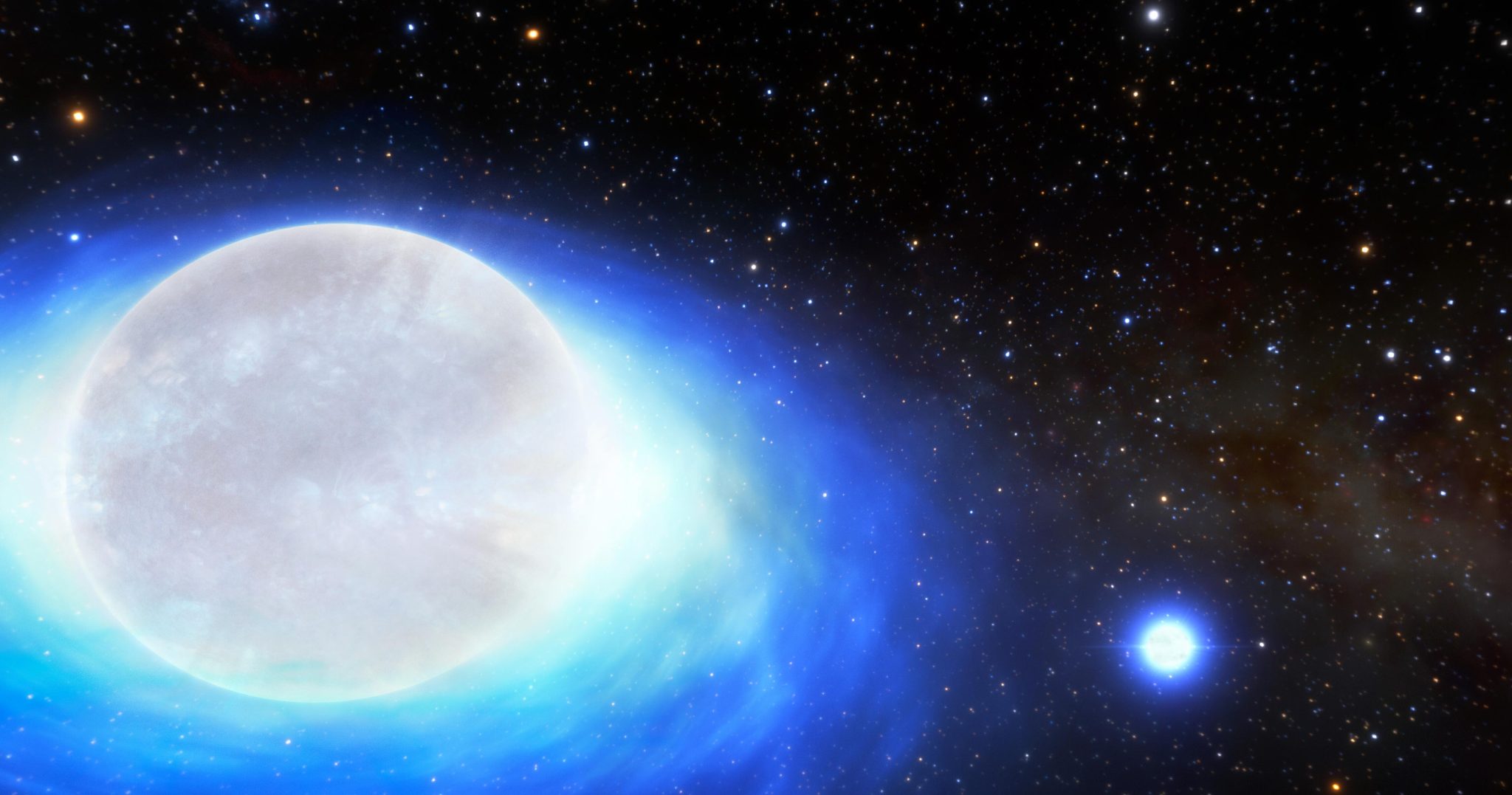A One-in-Ten-Billion Binary Star System – First Kilonova Progenitor System Identified

This is an artist’s impression of the first confirmed detection of a star system that will one day form a kilonova — the ultra-powerful, gold-producing explosion created by merging neutron stars. These systems are so phenomenally rare that only about 10 such systems are thought to exist in the entire Milky Way. Credit: CTIO/NOIRLab/NSF/AURA/J. da Silva/Spaceengine/M. Zamani
Astronomers using the SMARTS 1.5-meter Telescope uncover a one-in-ten-billion binary star system.
Astronomers using the SMARTS 1.5-meter Telescope at Cerro Tololo Inter-American Observatory in Chile, a Program of NSF’s kilonova — the ultra-powerful, gold-producing explosion created by colliding neutron stars. Such an arrangement is so vanishingly rare that only about 10 such systems are thought to exist in the entire
This unusual system, known as CPD-29 2176, is located about 11,400 light-years from Earth. It was first identified by 
This infographic illustrates the evolution of the star system CPD-29 2176, the first confirmed kilonova progenitor. Stage 1, two massive blue stars form in a binary star system. Stage 2, the larger of the two stars nears the end of its life. Stage 3, the smaller of the two stars siphons off material from its larger, more mature companion, stripping it of much of its outer atmosphere. Stage 4, the larger star forms an ultra-stripped supernova, the end-of-life explosion of a star with less of a “kick” than a more normal supernova. Stage 5, as currently observed by astronomers, the resulting neutron star from the earlier supernova begins to siphon off material from its companion, turning the tables on the binary pair. Stage 7, with the loss of much of its outer atmosphere, the companion star also undergoes an ultra-stripped supernova. This stage will happen in about one million years. Stage 7, a pair of neutron stars in close mutual orbit now remain where once there were two massive stars. Stage 8, the two neutron stars spiral into toward each other, giving up their orbital energy as faint gravitational radiation. Stage 9, the final stage of this system as both neutron stars collide, producing a powerful kilonova, the cosmic factory of heavy elements in our Universe. Credit: CTIO/NOIRLab/NSF/AURA/P. Marenfeld
“The current neutron star would have to form without ejecting its companion from the system. An ultra-stripped supernova is the best explanation for why these companion stars are in such a tight orbit,” said Noel D. Richardson at Embry-Riddle Aeronautical University and lead author of the paper. “To one day create a kilonova, the other star would also need to explode as an ultra-stripped supernova so the two neutron stars could eventually collide and merge.”
As well as representing the discovery of an incredibly rare cosmic oddity, finding and studying kilonova progenitor systems such as this can help astronomers unravel the mystery of how kilonovae form, shedding light on the origin of the heaviest elements in the Universe.
“For quite some time, astronomers speculated about the exact conditions that could eventually lead to a kilonova,” said NOIRLab astronomer and co-author André-Nicolas Chené. “These new results demonstrate that, in at least some cases, two sibling neutron stars can merge when one of them was created without a classical supernova explosion.”
Producing such an unusual system, however, is a long and unlikely process. “We know that the Milky Way contains at least 100 billion stars and likely hundreds of billions more. This remarkable binary system is essentially a one-in-ten-billion system,” said Chené. “Prior to our study, the estimate was that only one or two such systems should exist in a spiral galaxy like the Milky Way.”
Though this system has all the right stuff to eventually form a kilonova, it will be up to future astronomers to study that event. It will take at least one million years for the massive star to end its life as a titanic supernova explosion and leave behind a second neutron star. This new stellar remnant and the pre-existing neutron star will then need to gradually draw together in a cosmic ballet, slowly losing their orbital energy as gravitational radiation.
When they eventually merge, the resulting kilonova explosion will produce much more powerful DOI: 10.1038/s41586-022-05618-9
The team is composed of Noel D. Richardson (Embry-Riddle Aeronautical University), Clarissa Pavao (Embry-Riddle Aeronautical University), Jan J. Eldridge (University of Auckland), Herbert Pablo (American Association of Variable Star Observers), André-Nicolas Chené (NSF’s NOIRLab/Gemini Observatory), Peter Wysocki (Georgia State University), Douglas R. Gies (Georgia State University), Georges Younes (The George Washington University), and Jeremy Hare (NASA Goddard Space Flight Center).
NSF’s NOIRLab, the US center for ground-based optical-infrared…
Read More: A One-in-Ten-Billion Binary Star System – First Kilonova Progenitor System Identified

